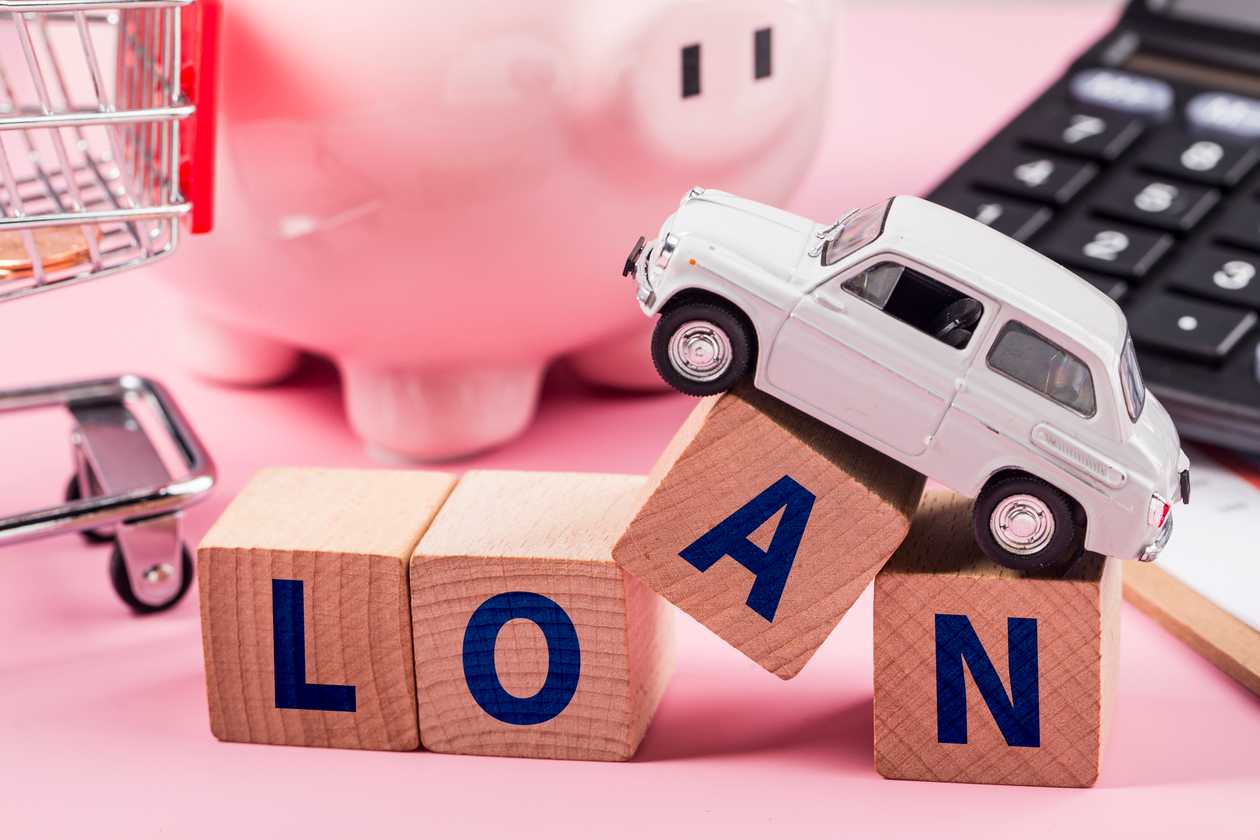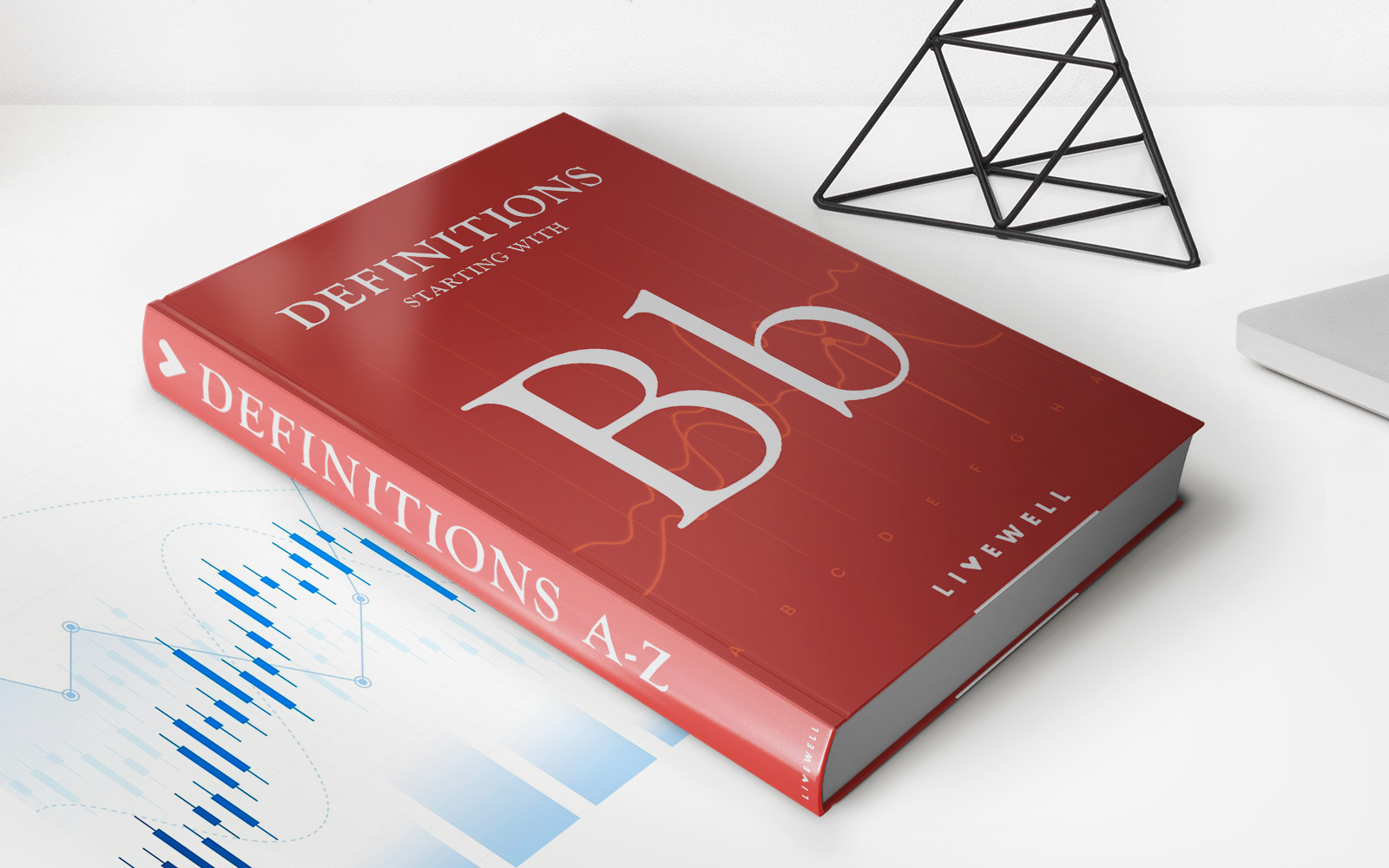

Finance
How To Get A $15,000 Loan With No Credit
Modified: March 1, 2024
Learn how to secure a $15,000 finance loan with no credit history. Discover the steps to get approved and access the funds you need today.
(Many of the links in this article redirect to a specific reviewed product. Your purchase of these products through affiliate links helps to generate commission for LiveWell, at no extra cost. Learn more)
Table of Contents
- Introduction
- Understanding the Importance of Credit Score
- Exploring Loan Options for No Credit Borrowers
- Researching and Comparing Lenders
- Gathering Necessary Documents and Information
- Applying for a $15,000 Loan with No Credit
- Managing Repayments and Building Credit History
- Tips for Improving the Chances of Loan Approval
- Conclusion
Introduction
Are you in need of a $15,000 loan but don’t have a credit history? While having a good credit score is usually important when applying for a loan, there are still options available for borrowers with no credit. It may seem challenging, but with the right approach, you can increase your chances of securing the loan you need.
Having no credit history can be a result of various factors. You may be just starting out, or you might have always relied on cash transactions and never needed to establish credit. Whatever the reason, it’s crucial to understand the impact of having no credit when it comes to loan applications.
A credit score is a numerical representation of your creditworthiness, based on your borrowing and repayment history. It helps lenders assess the risk of lending you money. Without a credit history, lenders don’t have any information to evaluate your ability to manage debt. This lack of information can make it challenging to get approved for loans, especially larger ones like a $15,000 loan.
However, don’t lose hope just yet. There are loan options specifically designed for individuals with no credit history. These loans, often referred to as no credit loans or no credit check loans, consider other factors like income, employment history, and assets to determine eligibility. While these loans may come with higher interest rates or stricter terms, they offer a solution for those who have yet to establish credit.
In this article, we will guide you through the process of obtaining a $15,000 loan with no credit. We’ll explore different loan options available for individuals with no credit history, discuss how to research and compare lenders, outline the necessary documents and information you need to gather, and provide tips for improving your chances of loan approval. By following these steps, you can increase your likelihood of securing the loan and start building your credit history.
Understanding the Importance of Credit Score
Your credit score plays a crucial role in financial transactions, including loan applications. It is a numerical representation of your creditworthiness, generated based on various factors such as payment history, credit utilization, length of credit history, new credit accounts, and credit mix. Lenders rely on your credit score to assess the risk of lending you money.
Having a good credit score indicates that you have a history of responsibly managing debt, making timely payments, and keeping your credit utilization low. This positive credit history provides lenders with confidence in your ability to repay loans on time. Conversely, a poor credit score suggests a higher risk of defaulting on payments, leading lenders to either deny your loan application or charge you higher interest rates to compensate for the perceived risk.
When applying for a $15,000 loan with no credit history, your lack of credit score poses a challenge. Lenders have no reference point to evaluate your creditworthiness, making it difficult for them to determine your ability to repay the loan. Without this information, they might view you as a higher risk borrower and impose stricter terms, higher interest rates, or even reject your loan application.
It is essential to understand that while having no credit history can make it tougher to secure a loan, it does not mean you are automatically disqualified. Loan options designed for individuals with no credit history take additional factors into consideration, such as income, employment stability, and assets, to determine your eligibility.
Building a credit history is important for your financial journey. It allows you access to better loan terms, lower interest rates, and improved financial opportunities. While it may take time to establish credit, there are steps you can take to begin building a positive credit history.
One effective strategy is to apply for a secured credit card, which requires a cash deposit as collateral. Using this card responsibly by making timely payments will help you establish a credit history and improve your credit score over time. Another option is to become an authorized user on someone else’s credit card, allowing their positive credit history to benefit your own.
As you begin your journey towards building credit, it’s crucial to be vigilant in monitoring your credit score. Regularly checking your credit report for errors and inaccuracies and addressing them promptly can help maintain a healthy credit profile. Additionally, practicing responsible credit habits such as paying bills on time, keeping credit card balances low, and avoiding overextending yourself financially will contribute to a positive credit score.
Now that you understand the significance of a credit score and the impact of not having one, let’s explore loan options available for individuals with no credit history.
Exploring Loan Options for No Credit Borrowers
If you don’t have a credit history, it’s important to be aware of the loan options specifically designed for individuals in your situation. While traditional lenders may require a credit score, there are alternative lenders, credit unions, and online lending platforms that specialize in providing loans to borrowers with no credit.
Here are some loan options to consider as a no credit borrower:
- Personal Loans: Personal loans are unsecured loans that can be used for various purposes, such as debt consolidation, home improvements, or unexpected expenses. Some lenders offer personal loans specifically tailored for individuals with no credit history. These loans may have higher interest rates or require a co-signer to compensate for the lack of credit history.
- Pawnshop Loans: If you have valuable assets like jewelry, electronics, or musical instruments, you can consider pawnshop loans. These loans involve using your item as collateral for the loan amount. The pawnshop will hold onto the item until you repay the loan, including interest and fees. Failure to repay the loan may result in the forfeiture of your item.
- Payday Loans: Payday loans are short-term, high-interest loans designed to be repaid with your upcoming paycheck. These loans are usually small in amount and can provide a quick solution for immediate financial needs. However, they often come with exorbitant interest rates, making them an expensive borrowing option. Be cautious when considering payday loans and ensure you fully understand the terms and costs involved.
- Secured Loans: With a secured loan, you provide collateral, such as a vehicle, home equity, or a savings account, to secure the loan. The collateral acts as a form of insurance for the lender, reducing the risk of lending to someone with no credit history. Secured loans typically come with lower interest rates and more favorable terms compared to unsecured loans.
- Alternative Credit Builders: Some lending platforms specialize in alternative credit-building loans. These loans are designed to help individuals with no credit history establish a positive credit profile. They often have lower loan amounts and higher interest rates. However, by making timely payments, you can begin building your credit history and improving your credit score.
It’s important to carefully evaluate the terms and conditions of each loan option, including interest rates, repayment terms, fees, and any additional requirements. Comparing multiple lenders and loan products will help you find the best fit for your financial needs.
In the next section, we’ll discuss how to research and compare lenders to ensure you make an informed decision when applying for a $15,000 loan with no credit.
Researching and Comparing Lenders
When applying for a $15,000 loan with no credit, it’s crucial to research and compare lenders to find the one that offers favorable terms and conditions. Here are some steps to consider when researching and comparing lenders:
- Online Research: Start by conducting online research to identify lenders that specialize in providing loans to individuals with no credit history. Look for reputable lenders with positive customer reviews and ratings. Pay attention to any red flags or complaints raised by previous borrowers.
- Check Eligibility Criteria: Visit the websites of potential lenders and check their eligibility criteria. Look for lenders that consider other factors besides credit history, such as income, employment stability, and assets. Ensure that you meet the minimum requirements before proceeding with the application.
- Compare Interest Rates and Fees: Compare the interest rates and fees charged by different lenders. Keep in mind that loans for individuals with no credit history often come with higher interest rates due to the perceived risk. However, it’s still important to find the lender with the most competitive rates. Consider the overall cost of the loan, including any origination fees, late payment fees, or prepayment penalties.
- Read Loan Terms and Conditions: Carefully read the loan terms and conditions provided by each lender. Make sure you understand the repayment terms, including the loan duration and monthly payment amount. Look for any hidden fees or clauses that may impact your ability to repay the loan.
- Customer Support: Evaluate the customer support services offered by each lender. Are they responsive and helpful? Do they provide clear communication and guidance throughout the loan application process? Good customer support can make a significant difference in your borrowing experience.
- Seek Recommendations: If possible, seek recommendations from friends, family, or trusted financial advisors who have dealt with lenders in similar situations. Their firsthand experiences can provide valuable insights and help you make an informed decision.
By taking the time to research and compare lenders, you can find the one that best suits your needs and offers favorable terms. Remember to prioritize lenders that report your loan activity to credit bureaus. This reporting will help you establish credit history and improve your credit score over time.
Once you have narrowed down your options and chosen a lender, it’s time to gather the necessary documents and information required for the loan application. We’ll discuss this in the next section.
Gathering Necessary Documents and Information
Before applying for a $15,000 loan with no credit, it’s important to gather all the necessary documents and information required by lenders. Having these documents prepared in advance can streamline the application process and increase your chances of loan approval. Here are some essential documents and information you may need:
- Proof of Identity: Lenders will require proof of your identity, such as a valid government-issued photo ID like a driver’s license or passport. Ensure that your identification documents are current and not expired.
- Proof of Income: To assess your ability to repay the loan, lenders will typically ask for proof of income. This can include recent pay stubs, bank statements, tax returns, or employment verification letters. The specific requirements may vary depending on the lender, so check their guidelines to ensure you provide the appropriate documents.
- Employment Information: Provide information about your current employment, including the name and contact details of your employer. Lenders typically want to verify your employment stability and income source.
- Bank Account Details: You may need to provide your bank account details, including the account number and routing number. This information is required for loan disbursement and repayment purposes.
- Proof of Residence: Lenders may request proof of your current address. This can be in the form of utility bills, rental agreements, or a driver’s license with your current address.
- Asset Information: If you have any assets, such as a vehicle or real estate, that you can use as collateral for a secured loan, be prepared to provide information and documentation related to those assets.
- References: Some lenders may require personal or professional references to vouch for your character and reliability. Be prepared to provide their contact information and consent to be contacted.
It’s important to note that the specific documents and information required may vary depending on the lender and the type of loan you’re applying for. Review the lender’s application checklist or speak to their customer service representative to ensure you have all the necessary documents and information ready.
Gathering all the required documents and information in advance can save you time during the loan application process and demonstrate your preparedness to potential lenders. With these documents in hand, you’ll be ready to apply for a $15,000 loan with no credit history.
Next, we’ll explore the steps involved in the loan application process and how you can increase your chances of approval.
Applying for a $15,000 Loan with No Credit
Once you have researched and selected a lender and gathered all the necessary documents and information, it’s time to begin the loan application process. Applying for a $15,000 loan with no credit requires careful attention to detail and thorough preparation. Here are the steps involved in the application process:
- Complete the Application: Start by filling out the loan application provided by the lender. Pay attention to each section and provide accurate and detailed information. Double-check your entries before submitting the application to avoid any errors or omissions.
- Attach Supporting Documents: Along with the application, you will need to attach the necessary supporting documents. Follow the lender’s instructions and ensure that all documents are clear, legible, and valid. Organize the documents in the order specified by the lender to avoid confusion.
- Review Terms and Conditions: Before submitting your application, thoroughly review the loan terms and conditions provided by the lender. Understand the interest rate, repayment schedule, and any associated fees or penalties. Make sure you feel comfortable with these terms before proceeding.
- Submit the Application: Once you have completed the application and gathered all the required documents, submit your application to the lender. Many lenders offer online application platforms, making it easy to submit your application digitally. Some lenders may require you to submit the application in person or through other designated methods.
- Follow up and Provide Additional Information: After submitting your application, the lender may request additional information or clarification on certain aspects. Be responsive to their requests and provide the necessary information promptly. This will help expedite the application process and demonstrate your cooperation.
- Wait for Approval: Once your application is submitted, the lender will review it and assess your eligibility. The approval process may range from a few days to several weeks, depending on the lender and their internal procedures. Be patient during this time and avoid applying for multiple loans simultaneously, as this can negatively impact your creditworthiness.
- Review the Loan Offer: If your loan application is approved, the lender will provide you with a loan offer detailing the terms and conditions of the loan. Carefully review the offer, including the interest rate, repayment schedule, and any associated fees. Only proceed with the loan if you are comfortable with the terms.
- Accept the Loan: If you are satisfied with the loan offer, notify the lender of your acceptance. This may require signing and returning the loan agreement or electronically accepting the terms. Once you have accepted the loan, the lender will proceed with the disbursement of funds.
It’s crucial to approach the loan application process with caution and diligence. Provide accurate information, respond to any lender inquiries promptly, and thoroughly review the loan terms before accepting the offer.
After securing the loan, it’s important to manage your repayments responsibly. This includes making timely payments to avoid late fees or additional charges and maintaining open communication with the lender in case of any financial difficulties.
In the next section, we’ll discuss tips for improving your chances of loan approval as a borrower with no credit history.
Managing Repayments and Building Credit History
Once you have successfully obtained a $15,000 loan with no credit history, it’s important to manage your repayments responsibly. This not only ensures that you fulfill your financial obligations but also helps you establish a positive credit history. Here are some tips for managing repayments and building your credit:
- Create a Repayment Plan: Develop a repayment plan to ensure you make timely payments towards your loan. Calculate your monthly payment amount based on the loan terms and incorporate it into your budget. Stick to the plan and avoid missing payments, as late or missed payments can adversely affect your credit score.
- Set Up Automatic Payments: Consider setting up automatic payments with your bank to ensure that your loan payments are made on time. This can help you avoid any oversight or forgetfulness and maintain a positive payment history.
- Monitor Your Credit Report: Regularly monitor your credit report to ensure that your loan payments are accurately reported. A positive payment history will contribute to building a strong credit profile. If you notice any errors or inaccuracies, promptly address them with the credit reporting agencies to maintain the integrity of your credit history.
- Budget Wisely: Adjust your budget to accommodate the loan repayment. Evaluate your expenses and identify areas where you can cut back or save money to ensure that you meet your loan payment obligations. Prioritize your loan payments to demonstrate your commitment to responsible financial management.
- Communicate with Your Lender: If you encounter financial difficulties or anticipate challenges in making your loan payments, reach out to your lender immediately. Open communication can help you explore potential solutions, such as modifying your repayment schedule or adjusting the loan terms to better fit your current financial situation.
- Consider Credit Building Strategies: In addition to making timely loan payments, consider other credit-building strategies. This can include applying for a secured credit card, responsibly using it, and paying off the balance in full each month. This demonstrates your ability to handle credit responsibly and contributes to building a positive credit history.
- Avoid Taking on Excessive Debt: While you may have obtained a $15,000 loan, it’s important to be mindful of your overall debt load. Taking on excessive debt can strain your financial resources and make it difficult to manage repayments. Borrow only what you need and ensure that you have a realistic plan in place to repay the loan.
By managing your loan repayments responsibly and taking steps to build your credit history, you can establish a solid foundation for future borrowing needs. Building a positive credit history opens doors to better loan terms, lower interest rates, and increased financial opportunities.
Now that you have a better understanding of managing loan repayments and building credit history, let’s explore some tips for improving your chances of loan approval as a borrower with no credit history.
Tips for Improving the Chances of Loan Approval
If you have no credit history and are looking to secure a $15,000 loan, there are strategies you can employ to enhance your chances of approval. While each lender has their own criteria and considerations, these tips can help strengthen your application:
- Establish a Relationship with a Bank: Building a relationship with a bank or credit union can improve your chances of loan approval. Having an existing account can demonstrate financial stability and responsibility.
- Consider a Co-Signer: If possible, ask a trusted family member or friend with a good credit history to act as a co-signer on the loan. Their creditworthiness can enhance your chances of approval and potentially secure more favorable loan terms.
- Show Proof of Stable Income: Lenders want assurance that you have a reliable income source to repay the loan. Prepare and provide proof of stable employment, such as pay stubs, tax returns, or employment verification letters.
- Provide Proof of Assets: If you have valuable assets, such as a vehicle or savings account, include documentation to show your financial stability and ability to repay the loan.
- Saving for a Down Payment: Saving for a down payment can demonstrate financial responsibility and reduce the loan amount, making it less risky for lenders. Consider saving a portion of the funds needed upfront.
- Show Consistent Payment History: Even without a credit history, demonstrating a history of consistent and timely payments for other bills, such as rent and utilities, can show your responsibility as a borrower.
- Start with a Smaller Loan: If possible, consider starting with a smaller loan and gradually building your credit. Successfully repaying smaller loans can create a positive credit history and increase your chances of approval for larger loans in the future.
- Be Realistic with Loan Amount: Requesting a loan amount that aligns with your income and financial capabilities increases the likelihood of approval. Avoid applying for loan amounts that are beyond your means.
- Improve Debt-to-Income Ratio: Lowering your debt-to-income ratio by paying off existing debts or reducing credit card balances can improve your overall financial profile. Lenders prefer borrowers with a lower ratio, as it reflects better financial stability.
- Show Stability in Residency: Demonstrating stability in your living situation, such as living at the same address for an extended period, can signal reliability and positively influence lenders.
Remember, each lender has their own underwriting criteria, so it’s vital to research and understand their specific requirements. By implementing these tips and presenting yourself as a responsible and reliable borrower, you can enhance your chances of getting approved for a $15,000 loan with no credit history.
Now that you have a comprehensive understanding of how to improve your chances of loan approval, let’s summarize the key points covered in this article.
Conclusion
Obtaining a $15,000 loan with no credit history may seem like a challenge, but with the right approach, it is possible. While having no credit can make the loan application process more difficult, there are lenders who specialize in catering to individuals in your situation.
Key takeaways for securing a loan with no credit:
Understanding the importance of credit score: A good credit score is crucial for loan approvals, but without a credit history, lenders rely on other factors to evaluate your creditworthiness.
Exploring loan options: Research and compare loan options specifically designed for individuals with no credit history. Look for lenders who consider additional factors like income, employment stability, and assets.
Gathering necessary documents and information: Prepare essential documents such as proof of identity, income, employment, residence, and any other documentation required by the lender.
Applying for the loan: Fill out the loan application accurately, attach supporting documents, and review the terms and conditions before submitting your application. Respond promptly to any lender inquiries for a smoother application process.
Managing repayments and building credit history: Create a repayment plan, set up automatic payments, budget wisely, and communicate with your lender if you encounter any financial difficulties. Use this opportunity to build a positive credit history and establish relationships with lenders.
Tips for improving loan approval chances: Establish a relationship with a bank, consider a co-signer, show proof of stable income, provide proof of assets, demonstrate consistent payment history, start with smaller loans, be realistic with loan amounts, improve debt-to-income ratio, and show stability in your residency.
By following these steps and implementing the mentioned tips, you can increase your chances of securing a $15,000 loan with no credit history. Remember, building a positive credit history takes time, but with responsible financial habits, you can establish a strong credit profile for future financial endeavors.
Now that you are equipped with knowledge and strategies, take the first step towards obtaining the loan you need and embark on your financial goals.














